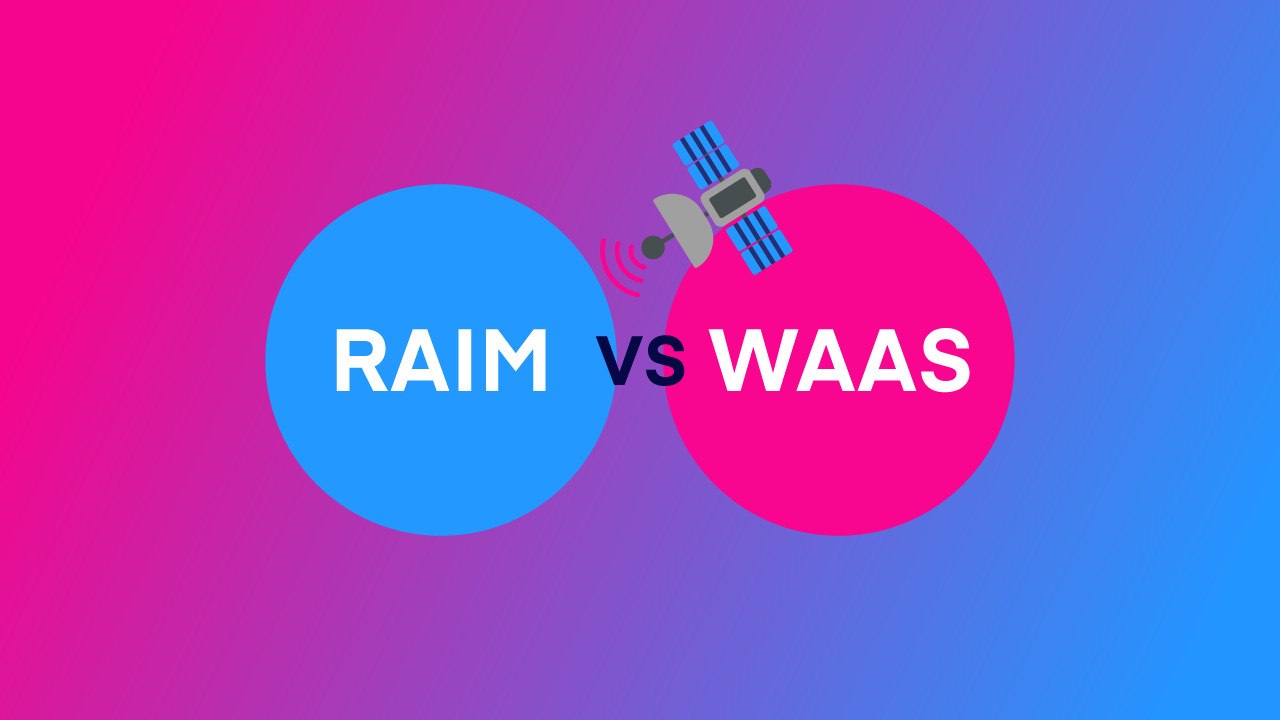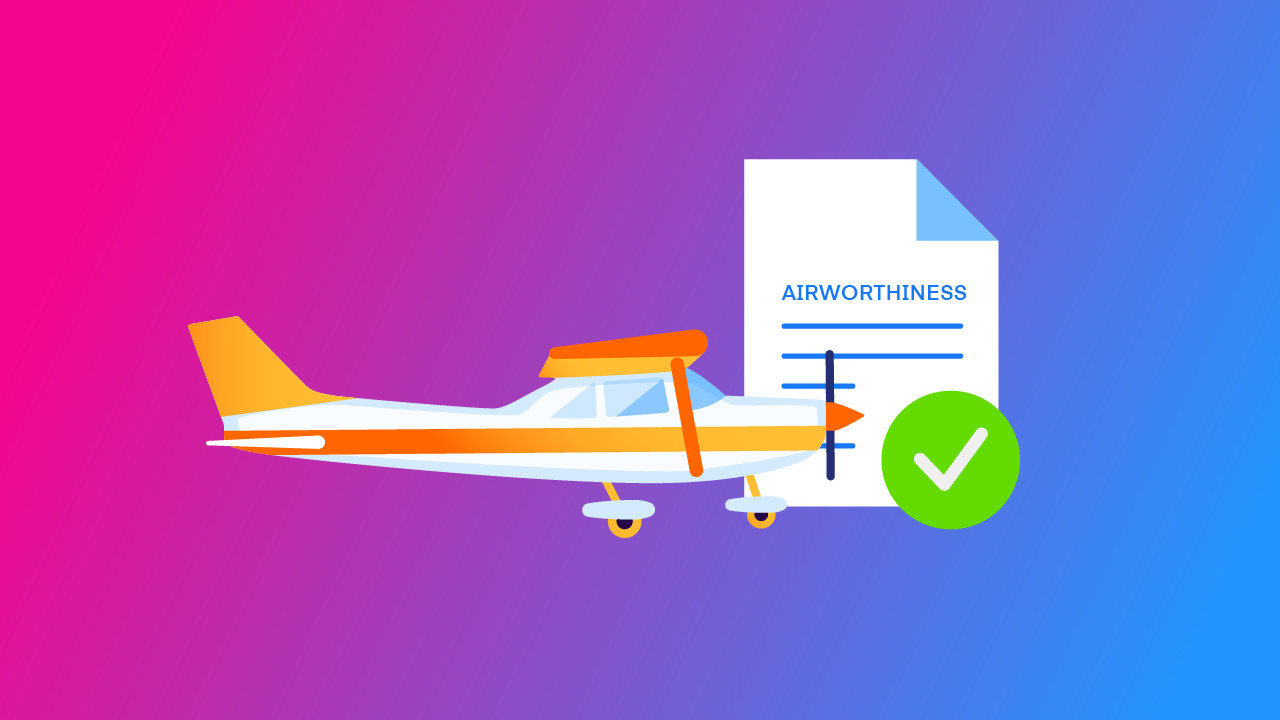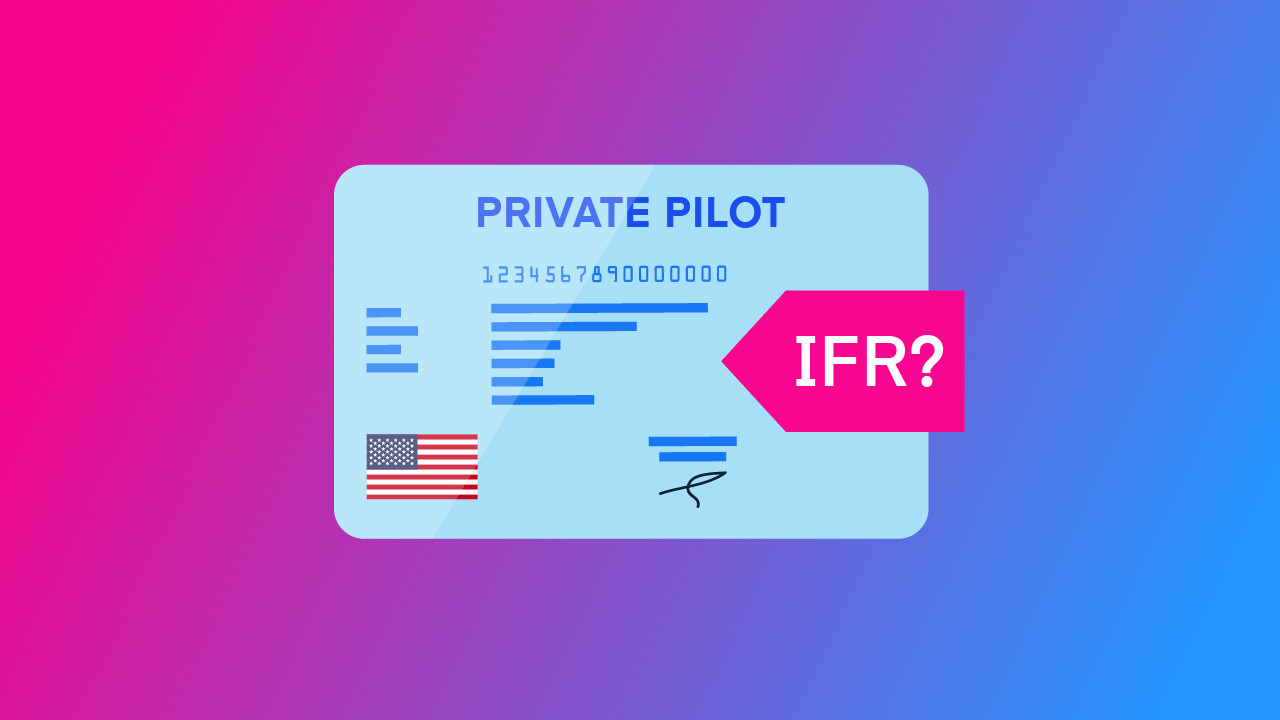-
Key Takeaways
-
What Is RAIM and How Does It Work?
- Understanding RAIM
- How RAIM Functions
- RAIM Limitations
-
What Is WAAS and How Does It Work?
- Understanding WAAS
- WAAS Infrastructure
- WAAS Precision
-
RAIM vs WAAS: Key Differences
- 1. Accuracy Comparison
- 2. Satellite and Ground Station Dependency
- 3. Operational Applications
-
Do I Need RAIM If I Have WAAS?
- Certification Requirements
- Regulatory Framework and GPS Redundancy
- How Does WAAS Guarantee Safety?
-
Why Is WAAS Better Than RAIM?
- Technological Advantages
- Instrument Approaches
- Cost and Accessibility
-
Conclusion
Have you ever wondered how pilots navigate with such precision? GPS technology has revolutionized aviation, but not all GPS systems are created equal.
That’s why it’s important to learn about RAIM and WAAS. These systems make GPS navigation more reliable and accurate, but they work in very different ways.
Ready to learn more? Let’s get started!
Key Takeaways
- RAIM and WAAS are technologies that improve GPS accuracy and reliability for aircraft navigation.
- WAAS offers more advanced and precise navigation capabilities.
- Pilots need to understand the differences between these systems for safe flying.
- Modern avionics have made GPS navigation more reliable and accessible than ever before.
What Is RAIM and How Does It Work?
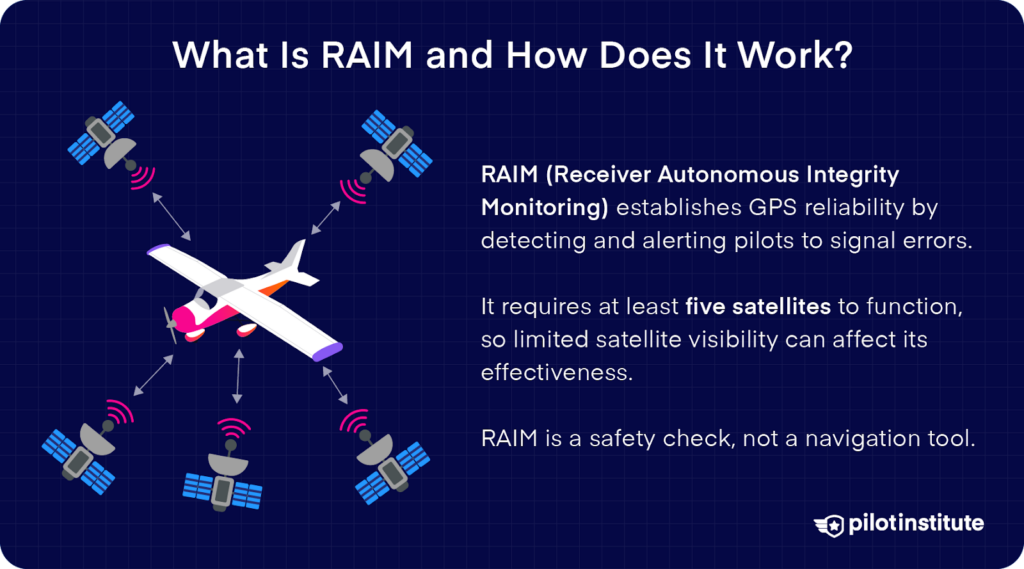
Precision and reliability are not just advantageous—they’re vital for aircraft navigation. GPS has transformed how pilots navigate, but what occurs when satellite signals falter?
This is where RAIM comes into play, a technology aimed at safeguarding pilots from potentially hazardous navigational mistakes.
Understanding RAIM
Receiver Autonomous Integrity Monitoring (RAIM) acts as a built-in GPS watchdog. Imagine you’re flying an aircraft, and suddenly, your GPS starts providing unreliable information. What then? RAIM is your first line of defense, as it can continuously verify the integrity of satellite signals.
How RAIM Functions
How does RAIM detect potential signal problems? RAIM works by comparing signals from several satellites to spot potential errors.
Here’s how RAIM keeps you safe:
- Checks for consistency among satellite signals.
- Detects possible satellite signal failures.
- Notifies you when GPS data is unreliable.
- Offers a basic level of error-checking during navigation.
RAIM Limitations
It’s important to know that RAIM has its limitations. The main drawback is its reliance on satellite visibility and availability. How does this impact safety? At least five satellites must be in view for RAIM to function properly. The RAIM check will fail if fewer satellites are available.
Note: As a pilot, you should know that RAIM is an error-checking tool, not a navigation solution.
What Is WAAS and How Does It Work?
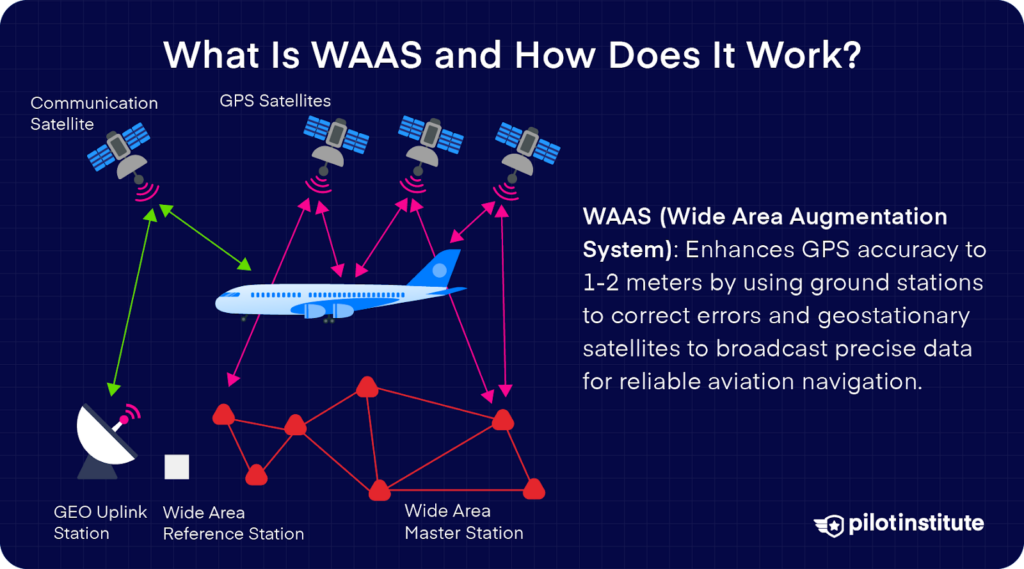
For aviation navigation, precision is required for safety. How does WAAS do that? WAAS is extremely reliable as it improves the accuracy, integrity, and availability of GPS signals.
Understanding WAAS
The Federal Aviation Administration (FAA) and the United States Department of Transportation (DOT) jointly created the Wide Area Augmentation System (WAAS) to improve GPS accuracy for civil aviation.
What does WAAS do? WAAS functions as an advanced GPS correction network that provides precise navigation for aircraft throughout North America.
WAAS Infrastructure
WAAS relies on a network of ground stations and geostationary satellites strategically located across the continent that:
- Continuously monitor GPS satellite signals.
- Detects and corrects signal errors in real-time.
- Broadcast corrected information via geostationary satellites.
- Provide high-precision location data to aircraft navigational systems.
WAAS Precision
With WAAS, aircraft can achieve impressive navigation capabilities, including vertical and horizontal accuracy within 1-2 meters and support for advanced approach procedures like Localizer Performance with Vertical guidance (LPV).
How does WAAS make flying safer? This technology provides reliable navigation in various weather conditions and increases safety during important flight phases such as landing and other flight operations.
RAIM vs WAAS: Key Differences
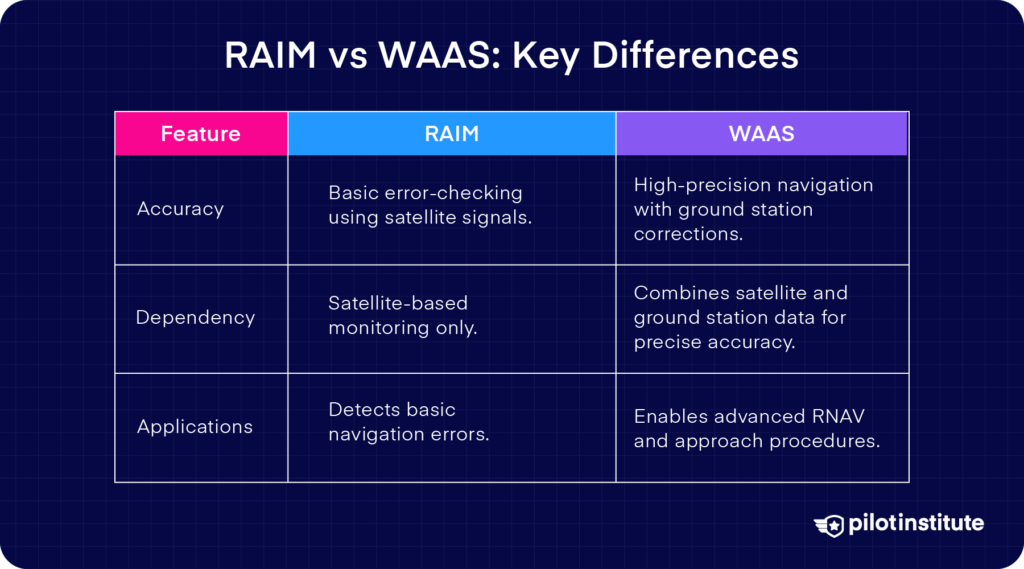
RAIM and WAAS offer different technologies and advantages. Why do these differences matter to pilots? Because navigation technologies continuously adapt to meet the growing demands of modern aviation. Let’s take a look at the differences between RAIM and WAAS.
1. Accuracy Comparison
RAIM: Basic error-checking that relies solely on satellite signals.
WAAS: High-precision navigation with ground station corrections.
The difference is quite pronounced. While RAIM offers a basic level of signal integrity checking, WAAS provides a complete, real-time correction system that boosts navigation accuracy.
2. Satellite and Ground Station Dependency
RAIM: Monitoring that is entirely satellite-based.
WAAS: Integrates satellite and ground station data for precise accuracy.
This key distinction allows WAAS to deliver more dependable navigation information, particularly in difficult environments and areas with weak satellite signals.
3. Operational Applications
RAIM: Limited to basic navigation error detection.
WAAS: Facilitates advanced Area Navigation (RNAV) and approach procedures.
For pilots, this means a massive improvement in operational capabilities. WAAS allows for more precise approaches, especially at airports situated in challenging terrain or with limited navigational resources.
Do I Need RAIM If I Have WAAS?
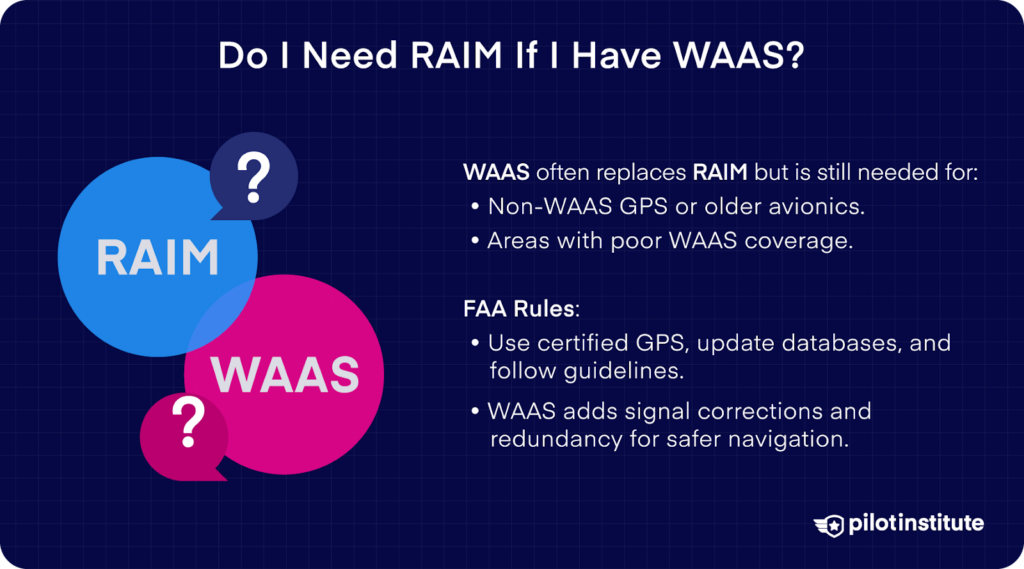
The short answer is it depends. While WAAS-enabled equipment has a built-in integrity monitoring system that eliminates the need for RAIM, you may still require RAIM functionality for non-WAAS operations or as a redundancy check in areas where WAAS coverage is unavailable.
RAIM may still be useful in certain circumstances:
- When operating non-WAAS GPS devices.
- During IFR (Instrument Flight Rules) flights.
- In aircraft equipped with older avionics.
- In areas where WAAS coverage is not good.
Certification Requirements
The FAA mandates specific navigation capabilities for different flight operations. What are these requirements? Pilots should:
- Use an IFR-approved GPS receiver.
- Verify the GPS receiver’s certification.
- Keep the GPS database updated.
- Refer to the latest FAA guidelines for required navigation equipment.
- Comply with instrument flight regulations.
In a nutshell, you can use WAAS for full IFR capability and RAIM on non-WAAS GPS aircraft. As a pilot, you need to receive training on how to operate GPS navigation systems for IFR flying, which includes an understanding of the limitations of WAAS and RAIM.
Regulatory Framework and GPS Redundancy
The FAA has established clear guidelines for GPS navigation systems, which detail the requirements for GPS and WAAS equipment used in various flight operations.
This regulatory framework positions WAAS as an essential element of aviation navigation with a strong redundancy system that uses multiple satellites to maintain a reliable signal. A WAAS system can also check the integrity and health of GPS satellites.
How Does WAAS Guarantee Safety?
Unlike traditional GPS systems that depend only on satellite signals, WAAS adds several layers of signal verification and correction. Ground-based reference stations consistently monitor GPS satellite signals, creating a comprehensive network capable of detecting and correcting potential errors.
Note: This multi-layered strategy makes sure that even if some satellite signals are compromised, the system can still provide accurate navigation information.
Why Is WAAS Better Than RAIM?
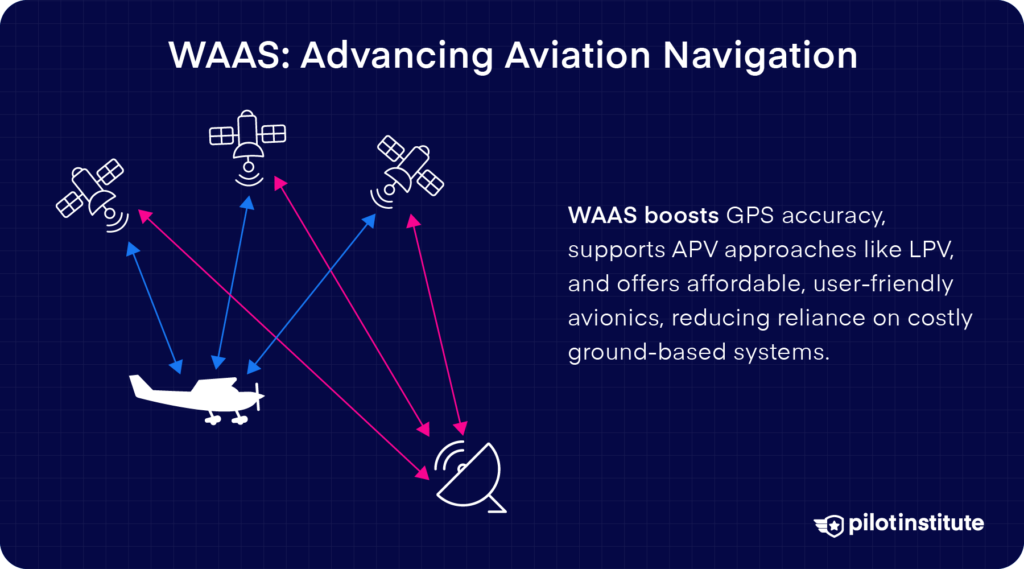
Aviation technology is driven by a continuous pursuit of accuracy and safety. Pilots and aviation engineers are constantly seeking ways to improve navigation precision and reduce the margin of error. The development of WAAS represents a major leap forward in GPS navigation technology.
Technological Advantages
WAAS surpasses RAIM in several key areas, providing greater navigation precision and improved reliability of signal correction. WAAS supports advanced navigation procedures and offers real-time signal correction, making it particularly effective for complex flight operations.
Instrument Approaches
WAAS-enabled GPS supports instrument approaches with advanced navigation procedures such as LPV and Lateral Navigation/Vertical Navigation (LNAV/VNAV).
How does WAAS help with approaches? LPV approaches offer precision similar to an Instrument Landing System (ILS), enabling aircraft to navigate with impressive accuracy down to decision altitudes as low as 200 feet above the runway.
Cost and Accessibility
How have navigation technologies become more accessible? Today’s WAAS-enabled avionics have become affordable and easier to install, making them more user-friendly. These systems are now standard in new aircraft.
Why does this matter? This technological evolution allows pilots to access advanced navigation tools at more reasonable prices. Also, the simplified design of WAAS-enabled GPS units leads to lower equipment costs for aircraft owners and operators.
Modern WAAS-enabled avionics also offer a cost advantage over older navigation systems. Traditional ground-based navigational aids like VOR and ILS stations are costly to maintain and require extensive infrastructure.
Conclusion
RAIM and WAAS each bring something different to the table when it comes to GPS navigation.
RAIM provides a solid foundation, but WAAS takes accuracy and performance to a much higher level.
As aviation embraces new technology, WAAS is becoming the standard for precision and reliability.
When you learn about these systems, you will be better equipped to make the most of modern avionics.
Keep exploring, and the skies will feel even more within reach.
